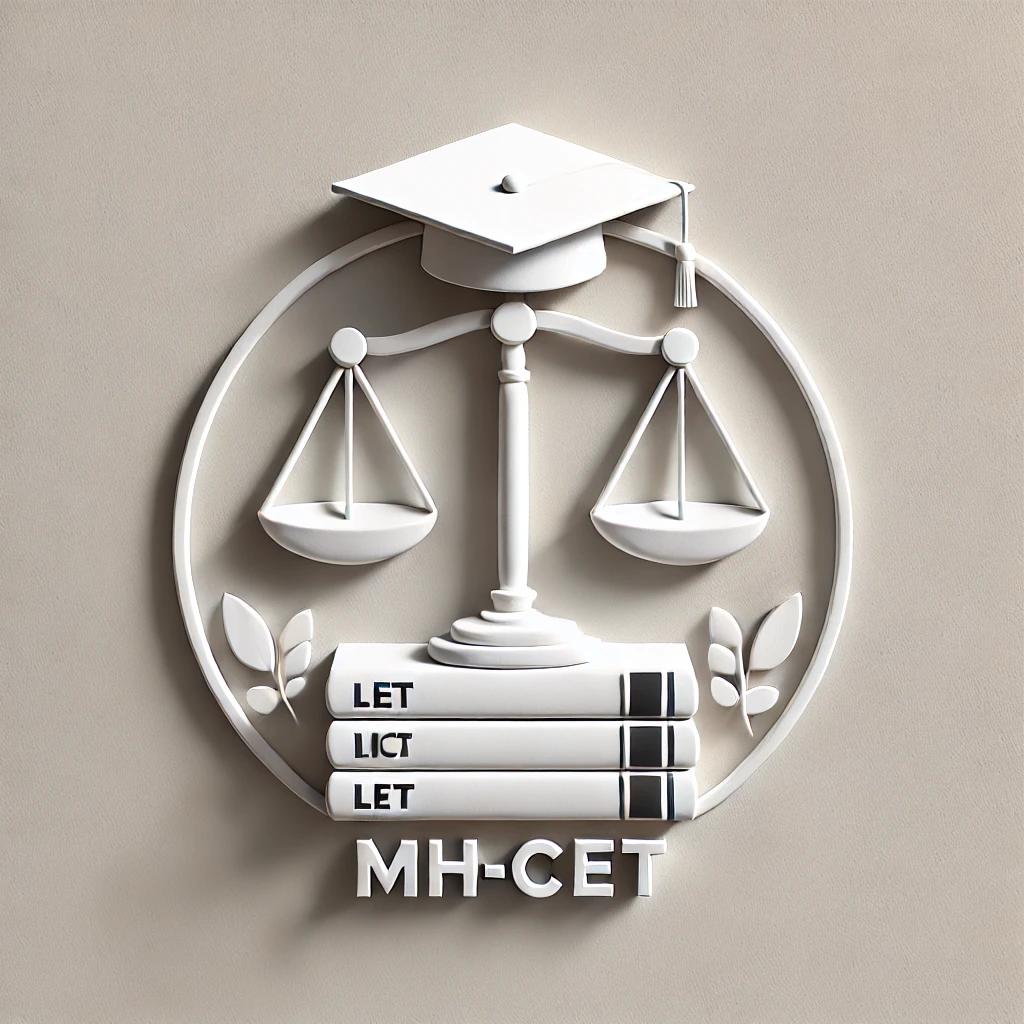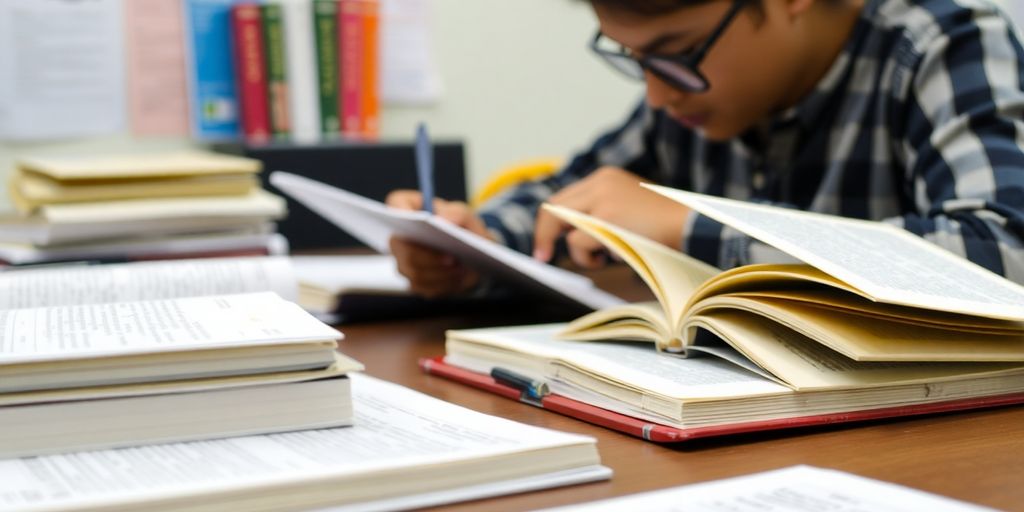By I Aug 15, 2024

Getting ready for the CUET exam can be tough, but taking good notes can make it easier. This article will show you different ways to take notes that will help you remember things better and do well on the exam.
Key Takeaways
Good note-taking helps you remember important information.
Different note-taking methods work better for different subjects.
Using the Cornell method can make your notes clearer.
Mind mapping is great for understanding complex topics.
Reviewing and revising your notes is important for remembering what you've learned.
Mastering the Art of Note-taking for CUET Exam Preparation
Effective note-taking is a game-changer for CUET exam preparation. It helps you retain information, organize your thoughts, and prepare efficiently for the exam. Let's dive into why it's so crucial and how it can boost your success.
Choosing the Right Note-taking Method for CUET
Selecting the right note-taking method is crucial for CUET exam success. Different techniques suit different learning styles and subjects. Here’s how to choose the best one for you.
Implementing the Cornell Note-taking System
Overview of the Cornell Method
The Cornell Method is a structured way to take notes that helps you organize and review your study material effectively. This method divides your paper into three sections: keywords, notes, and summary. The keywords section includes important terms and questions, the notes section is for detailed information, and the summary section ties everything together.
Step-by-Step Guide to Cornell Notes
Divide your paper: Draw a vertical line about 2.5 inches from the left side of the paper to create a narrow column for keywords. The right side will be for your notes, and leave space at the bottom for the summary.
Take notes: During lectures or while reading, jot down detailed notes in the right-hand column. Use bullet points, diagrams, and abbreviations to keep it concise.
Add keywords: After the lecture, review your notes and write down key terms or questions in the left-hand column. This helps in quick revision.
Summarize: At the end of your notes, write a brief summary of the main points. This reinforces what you've learned and makes it easier to review later.
Benefits of Using Cornell Notes for CUET
Enhanced Organization: The structured format helps keep your notes organized and easy to review.
Active Learning: Writing summaries and keywords encourages active engagement with the material, improving understanding and retention.
Efficient Review: The keywords and summary sections make it easier to quickly review and recall important information, which is crucial for CUET exam success.
The Cornell Method is not just about taking notes; it's about mastering time management and ensuring you understand and retain the material effectively.
Utilizing Mind Mapping for Complex Topics
Introduction to Mind Mapping
Mind mapping is a powerful tool for breaking down complex subjects into manageable chunks. It involves creating a visual representation of information, which helps in understanding and retaining intricate details. This method is particularly useful for subjects like history, psychology, sociology, and philosophy.
Creating Effective Mind Maps
To create an effective mind map, start with a central idea and branch out into related subtopics. Use arrows, bubbles, and colors to make connections between concepts. This visual approach not only makes studying more engaging but also helps in retaining information better.
Applying Mind Maps to CUET Subjects
Mind maps can be especially beneficial for CUET exam preparation. They allow you to see the overall structure of a topic, making it easier to understand and remember. For instance, when studying history, you can create a mind map to connect different events and their causes. This method is great for visual learners who grasp diagrams better.
Mind mapping is not just a study tool; it's a way to organize your thoughts and see the bigger picture.
However, be cautious not to get too focused on the visual elements and lose sight of the actual content. Balancing creativity with relevance is key to mastering this technique.
The Outlining Method: Organizing Information Logically
Basics of the Outlining Method
The outlining method is a straightforward way to take notes. It uses pointers and sub-pointers to structure your notes. Start by breaking your chapter into 4-5 main points and then add sub-notes under these pointers. This method is especially useful when dealing with a lot of content, making it easier to see the relationship between points.
Advantages of Structured Notes
Using the outlining method has several benefits:
Clarity: It helps in organizing information clearly.
Efficiency: It makes reviewing notes quicker and easier.
Focus: It keeps you focused on the main points and their details.
Examples of Outlining for CUET Preparation
For subjects like history, psychology, and sociology, the outlining method can be particularly effective. Here's a simple example for a history chapter:
Main Point 1: The Renaissance
Sub-point: Key figures
Sub-point: Major events
Main Point 2: The Industrial Revolution
Sub-point: Technological advancements
Sub-point: Social impacts
The outlining method is a great way to keep your notes organized and ensure you understand the relationship between different pieces of information. This can be particularly helpful for CUET preparation, where understanding and retention are key.
However, be cautious not to focus too much on filling spaces rather than understanding concepts. This method works best when you have access to laptops, but it can also be adapted for handwritten notes.
Digital Note-taking Tools and Techniques
Top Digital Tools for Note-taking
In today's tech-savvy world, digital note-taking tools have become essential for students preparing for exams like CUET. These tools offer a range of features that can make note-taking more efficient and organized. Some of the top digital tools include:
Evernote: A versatile tool that allows you to create notes, organize them into notebooks, and even add tags for easy searching.
OneNote: Part of the Microsoft Office suite, OneNote offers a flexible canvas for taking notes, drawing, and embedding multimedia.
Google Keep: A simple yet effective tool for quick note-taking, with features like color-coding and reminders.
Notion: A powerful tool that combines note-taking with project management, allowing you to create databases, calendars, and more.
Integrating Technology into Your Study Routine
Integrating digital tools into your study routine can significantly enhance your productivity. Here are some tips to get started:
Choose the Right Tool: Select a tool that fits your needs and learning style. For instance, if you prefer a minimalist interface, Google Keep might be the best choice.
Organize Your Notes: Use folders, tags, and notebooks to keep your notes organized. This will make it easier to find specific information when you need it.
Sync Across Devices: Ensure that your notes are synced across all your devices. This way, you can access your notes anytime, anywhere.
Use Multimedia: Take advantage of the ability to embed images, videos, and audio clips in your notes. This can make your notes more engaging and easier to understand.
Pros and Cons of Digital vs. Handwritten Notes
While digital note-taking offers many advantages, it's essential to consider the pros and cons compared to traditional handwritten notes.
Aspect | Digital Notes | Handwritten Notes |
|---|---|---|
Accessibility | Accessible from multiple devices, easy to share | Limited to physical copies, harder to share |
Organization | Easy to organize with tags, folders, and search functions | Requires manual organization, harder to search |
Multimedia Integration | Can include images, videos, and audio clips | Limited to text and drawings |
Memory Retention | May lead to passive learning, less cognitive processing | Enhances memory retention through active engagement |
Distraction | Potential for distractions from other apps and notifications | Less prone to distractions |
Tip: Experiment with both digital and handwritten notes to find what works best for you. Combining both methods can also be an effective strategy.
By understanding the benefits and limitations of digital note-taking tools, you can make an informed decision on how to incorporate them into your CUET exam preparation. Whether you choose to go fully digital or combine it with traditional methods, the key is to stay organized and consistent in your note-taking efforts.
Active Listening and Note-taking During Lectures
Strategies for Active Listening
Active listening is crucial for effective note-taking. It involves fully concentrating, understanding, and responding to what is being said. Here are some strategies to enhance your active listening skills:
Maintain eye contact with the lecturer to stay engaged.
Nod occasionally to show understanding and keep yourself involved.
Avoid distractions like your phone or unrelated materials.
Ask questions if something is unclear.
Summarize key points in your mind as you listen.
Effective Note-taking During Live Lectures
Taking notes during live lectures can be challenging but rewarding. Here are some tips to make the process smoother:
Prepare beforehand by reviewing previous notes and reading assigned materials.
Use abbreviations and symbols to write faster.
Focus on capturing main ideas rather than writing everything verbatim.
Highlight or underline important points for emphasis.
Leave spaces between topics to add additional information later.
Reviewing and Revising Lecture Notes
Regularly reviewing and revising your notes is essential for retention. Here’s how you can make the most out of your review sessions:
Review your notes within 24 hours of the lecture to reinforce memory.
Summarize the main points in your own words to ensure understanding.
Use different colors or symbols to organize information visually.
Discuss your notes with peers to gain different perspectives.
Create study guides from your notes to prepare for exams.
Consistent practice and regular review of your notes can significantly enhance your understanding and retention of the material.
By implementing these strategies, you can improve your note-taking skills and boost your performance in the CUET exam.
Reviewing and Revising Your Notes for Maximum Retention
Importance of Regular Review Sessions
Regularly reviewing your notes is crucial for effective learning. It helps reinforce memory, deepen understanding, and identify areas that need more attention. By revisiting your notes often, you can better retain information and improve long-term recall during exams.
Techniques for Effective Revision
To maximize your learning, use these effective revision techniques:
Summarize: Create concise summaries of your notes to capture the main ideas.
Flashcards: Use flashcards for quick self-assessment and active recall.
Practice Quizzes: Test yourself with practice quizzes to reinforce knowledge.
Study Groups: Collaborate with peers to discuss and clarify concepts.
Visual Aids: Utilize mind maps and concept maps for better comprehension.
Using Notes to Create Study Guides
Transform your notes into comprehensive study guides. This involves organizing your notes logically, highlighting key points, and adding any additional information needed for a thorough understanding. A well-structured study guide can be an invaluable tool for exam preparation.
Consistent review and revision of your notes can significantly enhance your focus and productivity during preparation.
Collaborative Note-taking: Sharing and Learning Together
Benefits of Collaborative Note-taking
Collaborative note-taking can be a game-changer for CUET exam preparation. Working together with peers allows students to pool their knowledge and insights, leading to more comprehensive and detailed notes. This method also encourages active participation and engagement during study sessions, making learning more dynamic and interactive.
Tools for Sharing Notes with Peers
There are several digital tools available that make sharing notes with peers easy and efficient. Platforms like Google Docs, Microsoft OneNote, and Evernote allow multiple users to edit and view notes in real-time. These tools also offer features like commenting and highlighting, which can help in clarifying doubts and emphasizing important points.
Enhancing Learning Through Group Study
Group study sessions can significantly enhance learning by providing different perspectives on the same topic. When students discuss and explain concepts to each other, it reinforces their understanding and retention. Additionally, group studies can help identify gaps in knowledge and provide immediate feedback, which is crucial for effective exam preparation.
Collaborative note-taking not only makes studying more enjoyable but also fosters a sense of community and support among students. By leveraging each other's strengths, students can achieve better results and feel more confident going into their CUET exams.
Customizing Your Note-taking Strategy for Different CUET Subjects
Tailoring Notes for Science Subjects
When it comes to science subjects, clarity and precision are key. Use diagrams and charts to visualize complex concepts. Highlight important formulas and definitions. For example, in physics, drawing free-body diagrams can help you understand forces and motion better. In chemistry, use color-coding to differentiate between elements, compounds, and reactions.
Effective Note-taking for Humanities
Humanities subjects often involve a lot of reading and interpretation. Summarize key points from texts and lectures. Use bullet points to list important dates, events, and figures. Highlighting quotes from primary sources can be particularly useful. For subjects like history, creating timelines can help you keep track of events and their significance.
Adapting Strategies for Quantitative Sections
For quantitative subjects like math and economics, practice problems are essential. Write down each step of the solution process to understand the logic behind it. Use tables to organize data and compare different sets of information. Reviewing your notes regularly will help reinforce your understanding and improve retention.
Customizing your note-taking strategy for different CUET subjects can significantly enhance your understanding and retention of the material. Experiment with different methods to find what works best for you.
Overcoming Common Note-taking Challenges
Identifying and Addressing Common Issues
Taking notes can be tricky, especially when you face common problems like missing key points or writing too much. Identifying these issues early can help you find solutions faster. For example, if you often miss important details, try recording lectures (with permission) to review later. If you write too much, practice summarizing information in your own words.
Staying Organized and Consistent
Keeping your notes organized is crucial for effective studying. Use headings, bullet points, and indentations to make your notes easy to read. This will also help you find specific information quickly. Consistency is key; stick to one note-taking method that works for you and use it throughout your study sessions.
Balancing Note-taking with Active Learning
It's important to balance note-taking with active learning. While taking notes, make sure you're also engaging with the material. Ask questions, participate in discussions, and relate new information to what you already know. This will help you understand and remember the material better.
Regularly reviewing your notes can significantly improve your retention and understanding of the material. Try to go over your notes within 24 hours of taking them and then again a few days later.
By addressing these challenges, you can make your note-taking more effective and boost your chances of success in the CUET exam.
Taking notes can be tough, but don't worry! We've got tips to help you out. Visit our website to learn more about how to make your note-taking better and easier. Whether you're studying for exams or just trying to keep track of your thoughts, we've got you covered. Check out our resources and start improving today!
Conclusion
In conclusion, mastering effective note-taking methods is crucial for success in the CUET exam. By choosing the right techniques, such as the outlining method or the Cornell method, students can organize their thoughts and retain important information more efficiently. Regular review and practice of these notes can significantly enhance understanding and recall. Remember, the key to excelling in the CUET exam lies in consistent preparation, effective note-taking, and thorough revision. With dedication and the right strategies, students can confidently navigate the challenges of the CUET exam and achieve their academic goals.
Frequently Asked Questions
What is the CUET exam?
The CUET exam is the Common University Entrance Test for admission into various undergraduate and postgraduate programs in central universities across India.
Why is effective note-taking important for the CUET exam?
Effective note-taking helps you organize information, remember key points, and better prepare for exams.
What are some popular note-taking methods for CUET preparation?
Popular methods include the Cornell Method, Mind Mapping, and the Outlining Method. Each has its benefits depending on the subject and your learning style.
How does the Cornell Note-taking System work?
The Cornell Method divides your paper into three sections: notes, cues, and summary. This helps in organizing information and makes review easier.
Can digital tools be used for note-taking?
Yes, digital tools like Evernote, OneNote, and Google Keep can be very effective for organizing and storing notes.
What are the benefits of collaborative note-taking?
Collaborative note-taking allows you to share notes with peers, which can enhance understanding and cover gaps you might have missed.
How often should I review my notes?
It's good to review your notes regularly, ideally within 24 hours of taking them and then periodically afterward to reinforce retention.
What should I do if I face challenges in note-taking?
Identify specific issues, stay organized, and balance note-taking with active learning. Adjust your methods as needed to find what works best for you.



